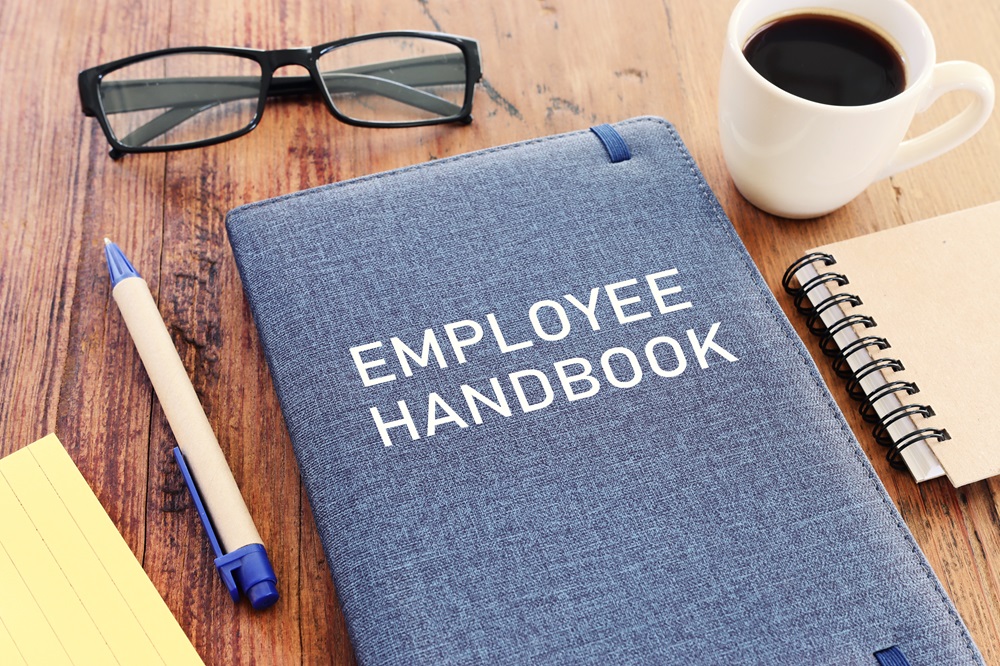An employee handbook is an important document for any business to have. Well-made employee handbooks outline the company’s policies and procedures while serving as a guide for employees to reference. The handbook establishes the work environment as professional, ensures legal compliance, and promotes consistency across the organization. It provides employees with a clear understanding of what is expected of them and what they can expect from the company. This article will serve as a comprehensive guide to crafting an effective employee handbook, ensuring it’s informative and engaging.
Planning and Preparation
Define the Purpose and Scope
Before you start writing, define the purpose and scope of the employee handbook. Think about what you want to achieve with the handbook and the key messages you want to convey. This will keep the document focused and effective.
Gather Necessary Information
Collect all relevant information about your company policies, procedures, and guidelines. Include everything from the company’s mission statement to detailed policies about employee conduct, benefits, and safety protocols. Meet with legal and HR experts during this stage is vital to make sure the employee handbook and the information within complies with local labor laws and regulations.
Consult with Legal and HR Experts
In addition to maintaining compliance, legal and HR professionals can advise you on what should be included in the handbook. They can help ensure that all policies are legally compliant, and that the handbook addresses any potential legal issues.
Essential Components of an Employee Handbook
Welcome Statement
Start the company handbook with a warm welcome statement. This starts the document on a positive note, making new employees feel valued right off the bat. The welcome statement should reflect the company’s culture and ethos.
Company Mission, Vision, and Values
Clearly articulate the company’s mission, vision, and core values. This section helps employees understand the company’s goals and the principles it operates under. This fosters a sense of belonging and alignment with the company’s objectives.
Equal Employment Opportunity Policy
Include a section that talks about the company’s commitment to equal employment opportunities. This policy should emphasize that the company does not discriminate based on race, color, religion, gender, sexual orientation, national origin, age, disability, or any other protected trait.
Code of Conduct
Outline the professional standards and behaviors expected of your employees. This section should talk about general workplace conduct, dress code, and the company’s stance on issues like harassment and discrimination. It’s essential to be clear and specific to avoid any confusion here.
Compensation and Benefits
Provide detailed information on the company’s pay structure. Information like pay periods, overtime policies, bonuses, and benefits such as health insurance, retirement plans, and other perks should be included here. This way, employees understand what they are entitled to and how they can access these benefits.
Work Schedules and Attendance
Give details about the company’s expectations regarding work schedules, attendance, and punctuality. Policies regarding flexible working hours, remote work, and procedures for reporting absences or tardiness should be included here.
Leave Policies (Sick, Vacation, Family, etc.)
Describe the various types of leave your employees are entitled to, including sick leave, vacation leave, family leave, and any other specific leave entitlements. Clearly outline the procedures for requesting these types of leave and any conditions that may apply.
Employee Conduct and Disciplinary Actions
Discuss the procedures for addressing employee misconduct and the disciplinary actions that may be taken. This section should talk about everything from minor workplace conduct infractions to serious violations, so employees have a full understanding of the consequences of their actions.
Anti-Harassment and Non-Discrimination Policies
Emphasize the company’s commitment to creating a safe and inclusive work environment. This section should clearly define what constitutes harassment and discrimination, and clearly spell out how employees can report and address such issues.
Health and Safety Guidelines
Make sure employees know the company’s safety protocols and emergency procedures like the back of their hand. This section should include guidelines on maintaining a safe workplace and instructions on what to do if an emergency arises.
Technology Use and Social Media Policies
Define the acceptable use of company technology, including computers, internet, email, and social media. This section should also discuss data security and confidentiality policies to protect both employees and the company itself.
Writing the Handbook
Use Clear and Concise Language
Use clear and concise language to make sure the company handbook is clearly understood. Avoid jargon and overly complex sentences. The goal is to have the handbook be accessible to all employees, regardless of their background or position within the company.
Maintain a Consistent Tone and Style
Maintain one tone and writing style consistently throughout the handbook. This makes the document more professional as well as easier to read and navigate. The tone should align with the company’s culture—whether it’s formal, friendly, or a mix of both.
Organize Content with Headings and Bullet Points
Use headings, subheadings, and bullet points to organize the employee handbook’s content. This makes the handbook more visually appealing and specific information easier to find. Think about including a well-structured table of contents, which also goes a long way in helping employees quickly find the sections they need.
Incorporate Visuals and Templates
Include visual aids such as charts, diagrams, and templates wherever possible when creating an employee handbook. These can help break up the text and make complex information easier to digest. Visual aids can also make the handbook more engaging and easier to reference.
Review and Revision
Obtain Feedback from Management and Employees
Before finalizing the handbook, have management and a select group of employees read it and give you feedback. This provides valuable insights and identifies any areas that may need clarification or improvement.
Conduct Legal Review
A comprehensive legal review is important for making sure the handbook complies with all relevant laws and regulations. This step reduces the risk of legal issues arising from unclear, confusing or non-compliant policies.
Make Necessary Revisions
Make any necessary changes to the handbook based on the feedback and legal reviews. Ensure all information is accurate, up-to-date, and clearly presented.
Implementation and Distribution
Digital vs. Print Copies
Decide whether to distribute the handbook digitally, in print, or both. Digital copies can be more convenient and environmentally friendly, while print copies may be preferred by some employees for easier referencing.
Training and Orientation Sessions
Include the handbook as part of the new hire orientation and onboarding process. Conduct training sessions to make sure employees understand the content and know how to use the employee handbook as a resource.
Regular Updates and Reviews
Make regular updates to the handbook to reflect any changes in company policies or regulations. Conduct periodic reviews to make sure the document stays relevant and accurate.
Using Employee Handbooks to Foster Company Culture
An employee handbook is an important part of any organization. It sets clear expectations, promotes a professional work environment, and ensures company policies are applied consistently. By following the steps outlined above when creating an employee handbook, you make sure it supports your company’s goals and fosters a positive company culture.




